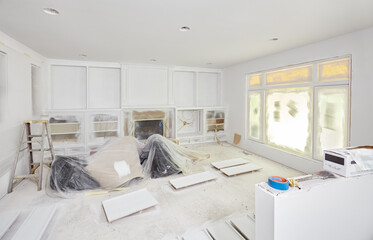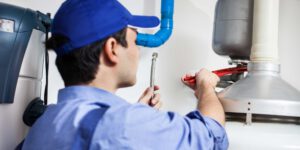There is no such thing as an overnight poker success. It takes time, tuition, practice and a desire to learn the game. This intersession course covers the core concepts that every poker player must know in order to become above average.
Take your poker skills to an elite world class level with these advanced strategies. Learn to think in ranges instead of particular hands and understand pot odds and expected value. Keep on reading the article below to learn more about Lezioni Di Poker.
The game of poker can be a great deal of fun. But before you can start winning, it’s important to understand the rules of the game. There are many different kinds of poker games, but most of them have the same basic rules. These include a ranking system for hands and betting structures, such as pot-limit, no-limit, and fixed-limit.
The game begins with each player receiving two cards. The dealer is then elected, and the players to his left may trade cards or ask for a cut. If the dealer cuts to a King, all players must put one stack of chips into the pot. If the dealer does not have a King, all players must trade. The player with the highest hand wins.
Variants
There are many poker variation options out there, and the best choice depends on a few factors. Your skill level, playing style, and bankroll are important considerations. Beginners should start with variations that have a gentle learning curve, while experienced players can benefit from more challenging games. In addition, you should choose a game that you enjoy and can focus on for a long period of time. Mixed games are another option that allow players to play different games at the same time, and these can be a fun way to experience the game.
A good poker coach will focus on helping you develop a solid fundamental strategy and improve your game in the areas of hand reading, starting hands, and math and probability. They’ll also provide advice on how to play different types of hands against the field. They may also discuss self management and macro-level poker concepts that go beyond hand-to-hand decision making. Some coaches also offer live sweat sessions, which involve the student playing on a couple of tables and discussing the hand in real time.
Choosing the right poker variation can be difficult for a new player, but it’s an important factor in becoming a profitable player. The right game format can give you a huge skill advantage over your opponents and make you a big winner. On the other hand, poor game selection can turn you into a big loser.
A good poker coach will help you learn to read your opponents’ tells and hone your own skills in order to win more money. They’ll teach you strategies that work in cash games, tournaments, and online play. They’ll even show you how to dominate heads-up and 3-bet pots.
Betting intervals
There are a number of betting intervals that can be used during a poker game. The first one, known as the deal, is when each player puts chips into a pot. A player who puts in more than the amount of the previous bettor is said to raise. When a player doesn’t raise, they are said to check. The player with the best poker hand wins the pot.
In the video lesson faLLout86 goes over a number of different turn spots after c-betting the flop. He also talks about sizing your bets correctly in these situations as well. This is an important lesson for any 6-max cash player who wants to improve their profits. The video is very easy to follow and doesn’t require any advanced math.
The next lesson focuses on postflop play. It begins with a general discussion of the different considerations that need to be made on each street before moving onto specific hands. faLLout86 emphasizes that it is more important to focus on the usual and frequent spots than trying to figure out complex and rare situations.
This lesson introduces the concept of expected value, which is a mathematical tool that can be very useful in poker. faLLout86 uses this tool to explain how to calculate the odds of your opponent calling a bet after the flop and why it is often better to check than raise in certain spots.
This is the last poker lesson in the BBZ Bundle series and it covers the final topic in 6-max cash games, which is how to play the river. faLLout86 continues to focus on common spots that most players encounter, which is great for beginners as it’s very easy to understand and implement.
Limits
When learning poker, it is important to have an understanding of the different limits that can be applied during a hand. The limits are set by the game rules and determine how much money can be bet on a particular round of betting. They also dictate the size of each individual bet. The limits in poker can be changed from one game to another, but this should only be done if the player has a clear understanding of how each limit is influenced by different variables.
For example, a player may raise with a high pocket pair in no-limit hold’em, but should never do so in limit hold’em. This is because a high pocket pair has no showdown value in limit, so it is unlikely that the other players will call it. In contrast, a high suited connector or one gap in early position has plenty of showdown value and should be raised.
There are several other factors that influence the way a hand should be played in limit, including the strength of your opponents’ holdings, the position at which you are playing it and the amount of betting that has taken place before your turn. This will affect the type of hands you should play and how often you can fold.
When making a move up in limits, it is important to have a plan and to stick to it. This will help you avoid getting demoralized after a bad session and can be a great tool for increasing your confidence in your game. Having a documented plan will also help you identify any areas where your game needs improvement. This will be particularly helpful if you are moving up to a higher limit and your win rate drops significantly.
Bluffing
Bluffing is an important part of the game of poker and a skill that can help you become a better player. However, bluffing can also lead to a big loss. This is why it’s important to use bluffing sparingly and only with hands that make sense as bluffs on the board. For example, a bluff with a weak two and seven is more likely to be called than a strong one, such as AQo.
Bluffs can be useful in the early stages of a hand to establish table image and pressure opponents into folding marginal hands. However, as the hand progresses, players tend to tighten up, making them more likely to call a bet with a strong hand. In addition, the pot size may increase in this stage, making a failed bluff more costly. Therefore, bluffing should be used with caution in the late stages of the game and should only be done when you are confident that your opponent can’t call your bet.
A good bluffing strategy involves understanding your opponents and exploiting their weaknesses. This includes analyzing their betting patterns and watching for tells. This allows you to make them believe that you have a strong hand when you actually don’t. Furthermore, it’s crucial to know how to read your opponents’ emotions. A successful bluff delights the bluffer and depresses his opponent, while a failed bluff causes him to feel ashamed. Knowing when to bluff can be very lucrative in both the poker and business worlds.






